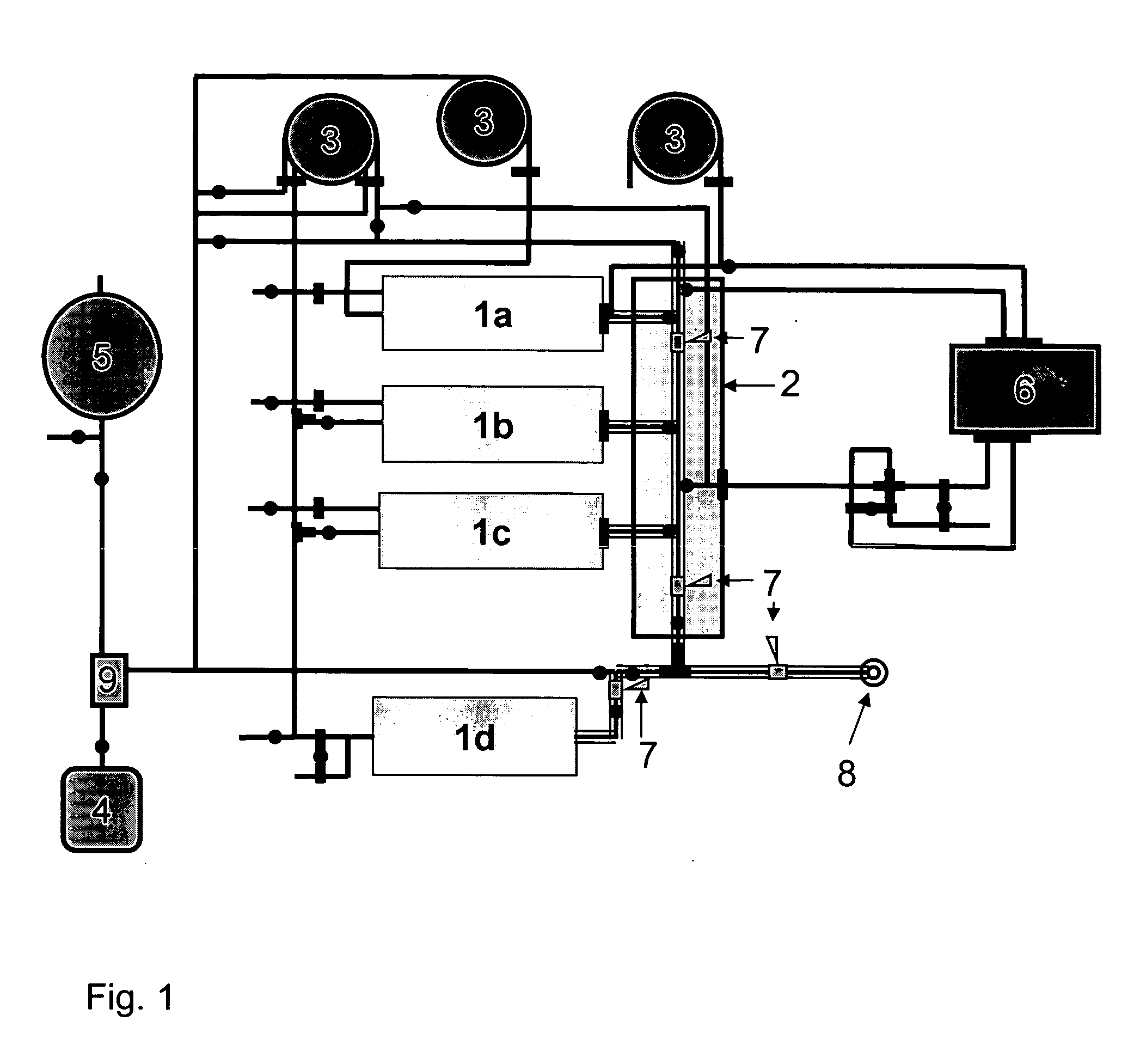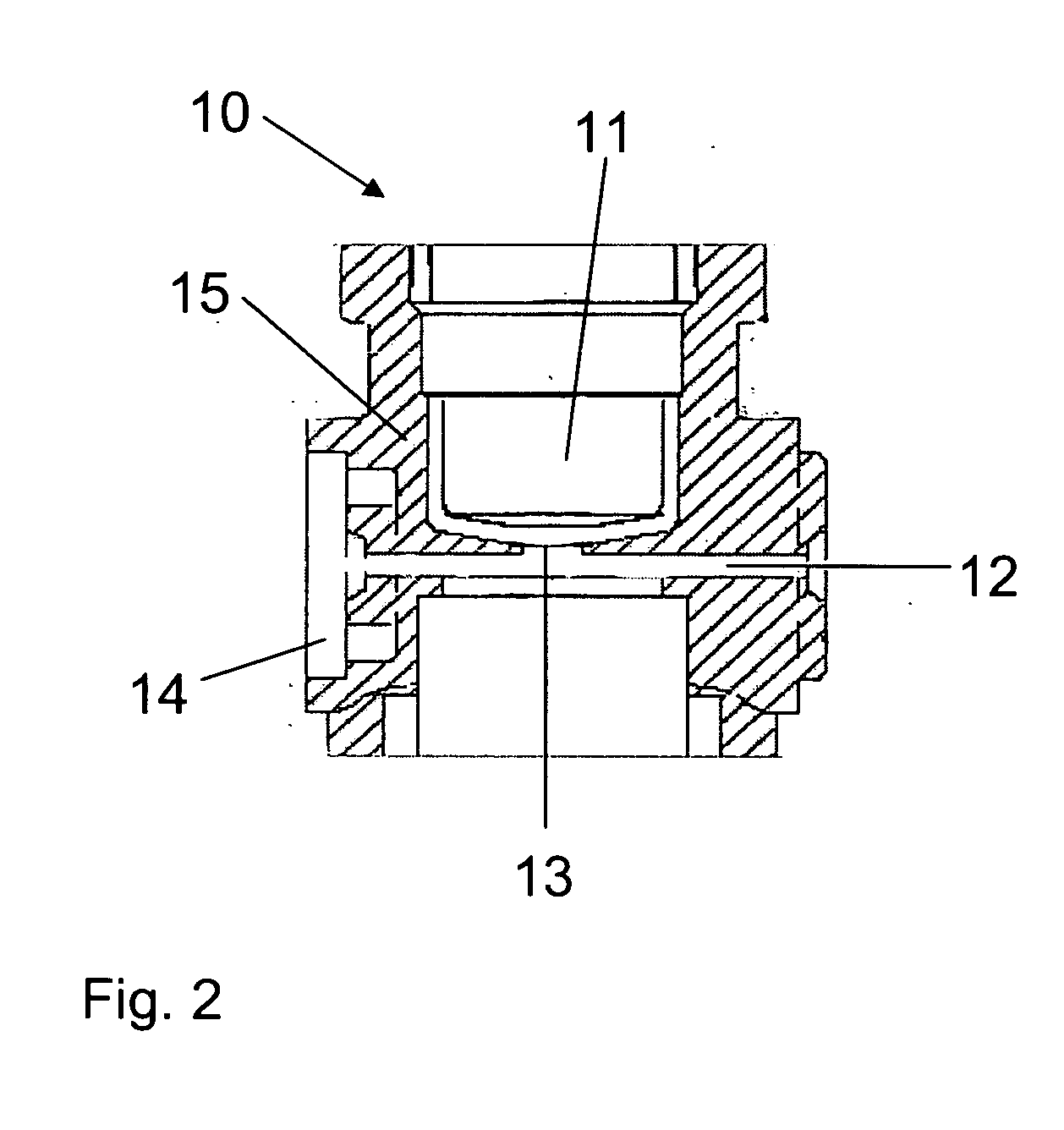Process for hydrophilizing surfaces of fluidic components and systems
a technology of fluidic components and hydrophilizing surfaces, applied in the field of hydrophilizing surfaces of fluidic components and systems, can solve the problems of poor wetness of plastic surfaces with aqueous liquids, measurement errors, calibration or quality control, etc., and achieve the effect of reducing the risk of attachment or formation of gas bubbles on the inner surfaces of fluidic components and improving the surface wettability of inner surfaces
- Summary
- Abstract
- Description
- Claims
- Application Information
AI Technical Summary
Benefits of technology
Problems solved by technology
Method used
Image
Examples
example 1
A System for Determining Several Diagnostically Relevant Parameters from Sample Liquids Using a Complex Fluidic System
[0064] An example of a system for determining several diagnostically relevant parameters from sample liquids using a complex fluidic system is the Omni S analytical system from Roche Diagnostics GmbH. The parameter profile of this system that is arranged in modules encompasses blood gases, electrolytes, total haemoglobin, CO oximetry, metabolites and bilirubin and it requires only small sample volumes and is hence particularly suitable for use on neonatal wards.
[0065]FIG. 1 shows a schematic overview of the fluidic system of the Omni S system. In this case the connecting lines between the individual fluidic components represent fluidic connections which can be designed as tubes or pipes depending on the intended use. The small circles shown within these fluidic connections represent valves that can be used to control the liquid transport. They are typically designe...
example 2
Preparing a Film of a Hydrophilic Polymer on a Fluidic Element Pretreated with Plasma Using a Housing Channel as an Example
[0066] The housing channel of a sensory element, for example an oxygen electrode, is described in the following as an example of a fluidic component. Such housing channels essentially correspond to liquid-conveying areas of sensory elements which are in direct contact with liquids and in particular include the sample channel that supplies and removes liquids within the sensory element. FIG. 2 shows an example of a section through the sensory area of such a sensor element using an oxygen sensor of the Clark type as an example that is used for example in the OMNI analytical system from Roche Diagnostics. These sensory elements (10) include a sample or housing channel (12) to transport and provide the sample in addition to the actual sensor (11) having an inner electrolyte space and electrodes located therein. A gas-permeable and substantially ion- and liquid-impe...
PUM
| Property | Measurement | Unit |
|---|---|---|
| thickness | aaaaa | aaaaa |
| thickness | aaaaa | aaaaa |
| thickness | aaaaa | aaaaa |
Abstract
Description
Claims
Application Information
 Login to View More
Login to View More - R&D
- Intellectual Property
- Life Sciences
- Materials
- Tech Scout
- Unparalleled Data Quality
- Higher Quality Content
- 60% Fewer Hallucinations
Browse by: Latest US Patents, China's latest patents, Technical Efficacy Thesaurus, Application Domain, Technology Topic, Popular Technical Reports.
© 2025 PatSnap. All rights reserved.Legal|Privacy policy|Modern Slavery Act Transparency Statement|Sitemap|About US| Contact US: help@patsnap.com


